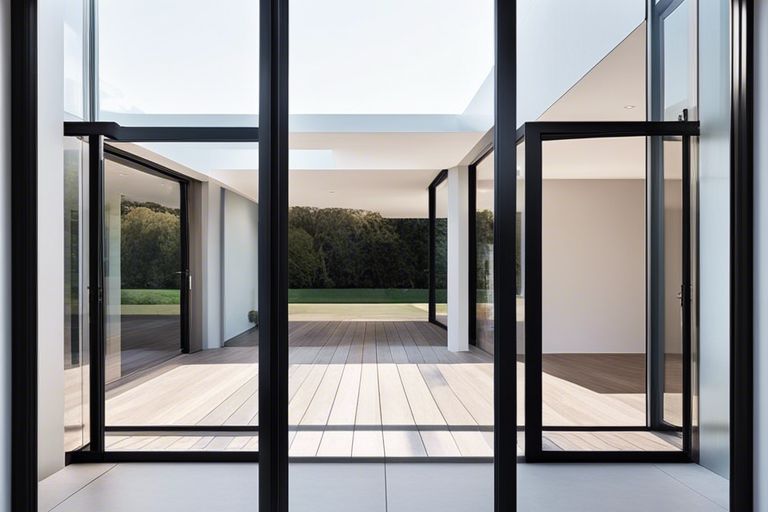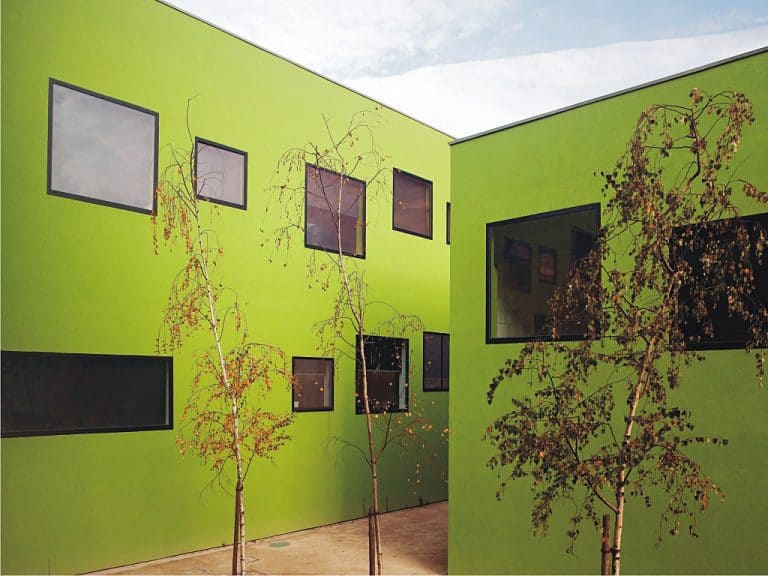Flat rooflights have revolutionised the way natural light enters our living spaces, offering a sleek and modern design solution for both residential and commercial buildings. In this blog post, we will explore innovative design ideas that can transform your space using flat rooflights. From creating a seamless indoor-outdoor living experience to maximising natural light and energy efficiency, flat rooflights offer endless possibilities for creative interior design. Discover how incorporating flat rooflights can not only enhance the aesthetics of a room but also improve the overall well-being of its occupants.
Key Takeaways:
- Maximise natural light: Flat rooflights are an innovative design idea that allows maximum natural light to enter a room, creating a bright and airy space.
- Enhance aesthetics: These rooflights provide a sleek and modern look to any space, enhancing the overall aesthetics and adding a touch of sophistication.
- Improve energy efficiency: By harnessing natural light, flat rooflights can help reduce the need for artificial lighting during the day, leading to improved energy efficiency in a building.

Understanding Flat Rooflights
When it comes to innovative design ideas for modern architecture, flat rooflights play a crucial role in bringing natural light into buildings. Understanding the different aspects of flat rooflights is essential for architects, designers, and homeowners looking to incorporate them into their projects.
Definition and Types of Flat Rooflights
Flat rooflights are sleek, minimalist roof windows that are installed flush with the roofline, creating a seamless look. There are several types of flat rooflights available in the market, including fixed, opening, walk-on, and roof lantern rooflights. Each type serves a specific purpose and offers unique features to meet different design requirements.
- Fixed rooflights: Provide a non-opening glazing solution for introducing natural light.
- Opening rooflights: Allow ventilation in addition to natural light.
- Walk-on rooflights: Designed to be strong enough to walk on, ideal for terrace roofs and balconies.
- Roof lantern rooflights: Add a statement feature to the roof, allowing for maximum light exposure.
- Any decision on which type to choose should consider the specific requirements of the project, such as design aesthetics, functionality, and budget.
Materials and Technologies in Rooflight Construction
When it comes to materials and technologies used in flat rooflight construction, quality is paramount to ensure durability, energy efficiency, and performance. Common materials include aluminium, uPVC, and timber, each offering different characteristics in terms of strength, insulation, and maintenance requirements. Technologies such as low-E glass, argon gas filling, and thermal breaks help improve energy efficiency and thermal performance of flat rooflights.
Choosing the right materials and technologies is crucial to the overall success of the rooflight installation. Aluminium is often preferred for its lightweight yet sturdy properties, while uPVC is low maintenance and cost-effective. Timber provides a natural aesthetic appeal but requires more upkeep. Combining these materials with advanced technologies ensures that flat rooflights contribute positively to the overall sustainability and comfort of a building.
Design Integration Techniques
Integrating rooflights into a design requires careful consideration of various factors to ensure a seamless and effective outcome. From aesthetic considerations to structural and functional aspects, each element plays a crucial role in achieving a successful design integration.
Aesthetic Considerations for Rooflight Integration
When integrating rooflights into a design, it is essential to consider the overall aesthetics of the space. Harmonising the rooflight design with the existing architecture is key to achieving a cohesive look. Additionally, the placement and size of rooflights should be thoughtfully considered to enhance natural light distribution and create a visually appealing environment.
Furthermore, choosing the right materials and finishes for rooflights can significantly impact the aesthetic appeal of the design. Opting for sleek and minimalistic designs can help achieve a modern look, while incorporating frameless options can create a sense of openness and maximise views from the space.
Structural and Functional Aspects in Design
Addressing the structural and functional aspects of rooflight integration is crucial to ensure the long-term durability and efficiency of the design. Proper integration techniques should consider factors such as waterproofing, thermal performance, and ventilation requirements to prevent issues such as leaks, heat loss, and condensation.
Moreover, incorporating rooflights strategically can optimise natural light levels, reducing the need for artificial lighting and enhancing energy efficiency within the space. By balancing aesthetics with structural and functional considerations, designers can create innovative and sustainable design solutions that elevate the overall user experience.

Creative Applications of Flat Rooflights
Enhancing Small Spaces with Natural Light
In small spaces, such as bathrooms, hallways, or compact living areas, flat rooflights can make a significant difference by flooding the area with natural light. The sleek design of these rooflights allows for maximum light penetration, creating a sense of openness and airiness. By strategically placing flat rooflights in these confined spaces, homeowners can enjoy the benefits of natural light without compromising on space.
Additionally, flat rooflights can be used in basements or cellars to transform dark and dingy areas into welcoming spaces filled with light. This innovative approach not only enhances the aesthetics of the room but also contributes to a healthier living environment by reducing the reliance on artificial lighting.
Innovative Uses in Residential and Commercial Projects
Flat rooflights are not just limited to residential properties; they have also found innovative uses in commercial projects. From offices and retail spaces to restaurants and hotels, flat rooflights are being incorporated into design schemes to maximise natural light and create visually striking interiors. The seamless integration of flat rooflights not only adds a modern touch to the architecture but also improves the overall atmosphere of the space.
Architects and designers are increasingly recognising the advantages of using flat rooflights in both residential and commercial projects. The ability to enhance natural light levels, create a sense of spaciousness, and improve energy efficiency makes flat rooflights a versatile and sustainable design solution for a wide range of applications.

Maintenance and Sustainability
When it comes to flat rooflights, maintenance is key to ensuring their longevity and performance. Regular inspection and cleaning of rooflights are essential to prevent debris buildup and potential water pooling. Additionally, checking for any signs of wear and tear such as cracks or leaks is crucial in maintaining the integrity of the rooflights.
Long-Term Care for Rooflights
To ensure the long-term durability of rooflights, it is recommended to schedule annual inspections by a professional to detect any issues early on. Cleaning the glass surfaces and frames regularly can help prevent dirt and grime build-up, which can impact the amount of natural light entering the space. Addressing any maintenance issues promptly can extend the lifespan of rooflights and prevent costly repairs in the future.
Eco-Friendly Design and Energy Efficiency
Flat rooflights can contribute to energy efficiency and eco-friendliness in a building by maximising the use of natural light and reducing the need for artificial lighting during the day. By incorporating rooflights into the design, buildings can reduce their carbon footprint and lower energy consumption, leading to cost savings and a more sustainable environment.
Furthermore, rooflights can help regulate indoor temperatures by allowing natural light and heat into a space, reducing the reliance on heating and cooling systems. This passive design approach not only improves energy efficiency but also enhances the overall comfort and well-being of occupants in the building.
Conclusion: Innovative Design Ideas Using Flat Rooflights
Flat rooflights offer a modern and sleek design element that can elevate any architectural project. By incorporating these innovative rooflights into your design, you can maximise natural light, create a sense of spaciousness, and enhance the overall aesthetics of a building. From creating a stunning feature in a contemporary home to transforming a commercial space into a light-filled environment, the possibilities with flat rooflights are endless. Architects and designers are increasingly turning to flat rooflights to introduce a sense of luxury and sophistication to their projects, making them a popular choice in modern construction. Consider incorporating flat rooflights into your design ideas to add a touch of elegance and style while embracing the benefits of natural light.
FAQ
Q: What are Flat Rooflights?
A: Flat Rooflights are modern skylights that are installed on flat roofs to allow natural light to enter a room. They are designed to be sleek and minimalistic, providing a contemporary and stylish look to any building.
Q: How can Flat Rooflights enhance innovative design ideas?
A: Flat Rooflights can enhance innovative design ideas by creating a seamless connection between indoor and outdoor spaces, increasing natural light in a room, and providing a modern aesthetic appeal. They can also be customised in various shapes, sizes and finishes to complement different design styles.
Q: What are the benefits of using Flat Rooflights in architecture and interior design?
A: Using Flat Rooflights in architecture and interior design can boost energy efficiency by reducing the need for artificial lighting during the day, improve the overall health and well-being of occupants by increasing exposure to natural light, and create a visually striking feature that adds value to a property.






